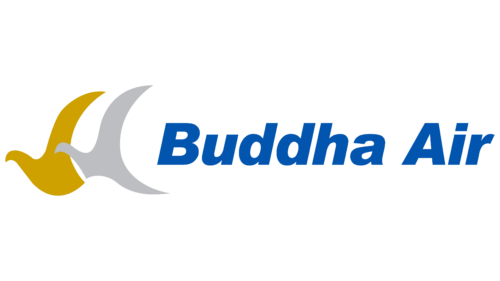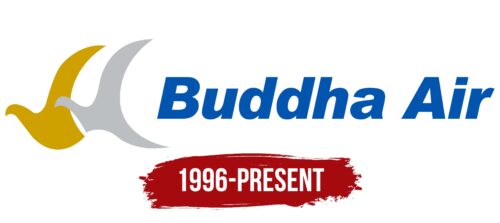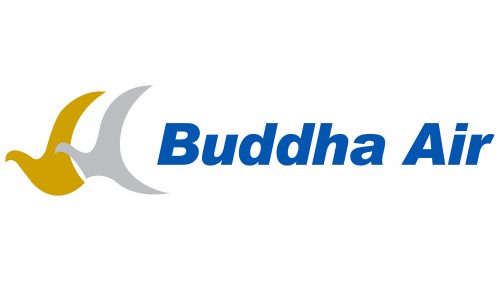Buddha Air’s logo features flying birds, which reminds one of the airline helping people fly safely from one place to another. The airline wants everyone to feel free, like a bird in the sky. The logo is simple, but it also says that this airline cares about doing its job well.
Buddha Air: Brand overview
Buddha Air was founded in 1996 by Surendra Bahadur Basnet to make air travel reliable and affordable in Nepal. This initiative aimed to enhance connectivity within the country’s diverse and remote areas, thereby boosting tourism.
The airline’s first flight was from Kathmandu to Pokhara on October 11, 1997, using Beechcraft 1900D aircraft. In response to the growing demand for domestic flights, the company quickly expanded its services to include Nepalese cities like Biratnagar and Bhairahawa.
From 2001 to 2005, it expanded its fleet by adding ATR 42 and ATR 72 aircraft. These planes increased passenger capacity and enabled flights to challenging destinations such as Lukla and Jomsom, which are popular with trekkers and adventure tourists.
Between 2006 and 2010, it revamped its fleet, replacing older Beechcraft models with new, more efficient ATR aircraft. By 2011, it introduced the improved ATR 72-500, which increased passenger comfort and safety.
In 2016, when the company celebrated its 20th anniversary, it maintained its position as Nepal’s leading domestic airline. It took strict safety and hygiene measures during the global pandemic to continue its operations.
After Surendra’s death, Birendra Bahadur Basnet took over leadership. Astha Basnet Thapa, representing the next generation, joined the company’s board. For over twenty years, the airline has been committed to customer service and safety, significantly contributing to Nepal’s economic growth and development of its tourism sector.
Meaning and History
What is Buddha Air?
Buddha Air is a renowned airline based in Jawalakhel, Lalitpur, Nepal, near Patan. Since 1996, the company has demonstrated an unwavering commitment to quality service, safety, and reliability in the aviation industry. At the beginning of its operations, the company’s goal was to provide reliable and safe air transportation, and this commitment has remained constant in its operations. Despite the challenges in the aviation industry, the airline has achieved significant success by offering domestic and international flights, thereby connecting Nepal with the rest of the world.
1996 – today
Nepal Airlines uses the image of flying birds in its emblem. Two such birds are in the Buddha Air emblem – gold and silver birds. They appear like arches consisting of wide curved bands with pointed ends. The yellow silhouette is larger than the gray, creating a visual effect of objects at different distances. Next to it is the carrier’s name, typed in bold italic font. Almost all letters are lowercase, except for “B” and “A,” which are capitalized. The smooth shape of the glyphs, rounded lines, and thickened stems create a feeling of reliability and safety.
Using gold and silver colors gives the brand image a luxurious and premium feel. The bold italic font chosen for the company name emphasizes its commitment to safety and reliability. The difference in the size of the two bird figures adds depth to the logo, making it more appealing to the viewer. This thoughtful design captures the essence of flight and the values of trust and safety that are important in the aviation industry.
FAQ
What happened to Buddha Air?
On September 25, 2011, Buddha Air Flight 103 crashed while attempting to land at Tribhuvan International Airport in Kathmandu. The plane returned from a sightseeing trip to Mount Everest, a route known for difficult flying due to mountainous terrain and unpredictable weather.
The Beechcraft 1900D, known for its reliability on short regional flights, encountered bad weather that day, making navigation and approach difficult. As the plane approached Kathmandu, it experienced problems that caused it to crash, killing all 19 people on board, including passengers and crew.
The disaster was a major blow to the company, leading to a major review and improvement of safety and flight operations.
Is Buddha Air private?
Yes, the company is a private airline. It all started on October 11, 1997, with a Beechcraft 1900D. Over the years, it has become Nepal’s largest and oldest private domestic airline. It plays a key role in Nepal’s aviation sector by improving access to various regions of the country with its domestic flights. Operating independently from the government, the company strives to be efficient and safe while providing superior customer service to help it remain competitive in the marketplace.
What is Buddha Air’s latest aircraft?
The company has added the ATR 72-500 to its fleet, a modern turboprop aircraft renowned for its enhanced comfort and performance. This model is designed for flying in Nepal’s difficult geographical and climatic conditions. It’s great for short trips over mountainous terrain and provides reliable travel even into the most remote areas.
What is the airline code for Buddha Air?
The company uses two codes: U4 and BHA. U4 is the IATA code used for ticketing and flight planning. BHA is an ICAO code used in air traffic control to communicate with aircraft. The company’s call sign is “BUDDHA AIR”. These codes help identify it in aviation systems worldwide and are important for the organization of flights and their smooth operation.
Who is the CEO of Buddha Air?
In March 2023, Birendra Bahadur Basnet became the company’s executive chairman. His appointment was confirmed at a general meeting of investors and board of directors members. The role of executive chairman often includes a broader range of responsibilities than a traditional CEO. This includes participation in decision-making at the executive and board levels. Birendra Bahadur Basnet now plays a critical role in leading the company, focusing on its operational and strategic directions.





